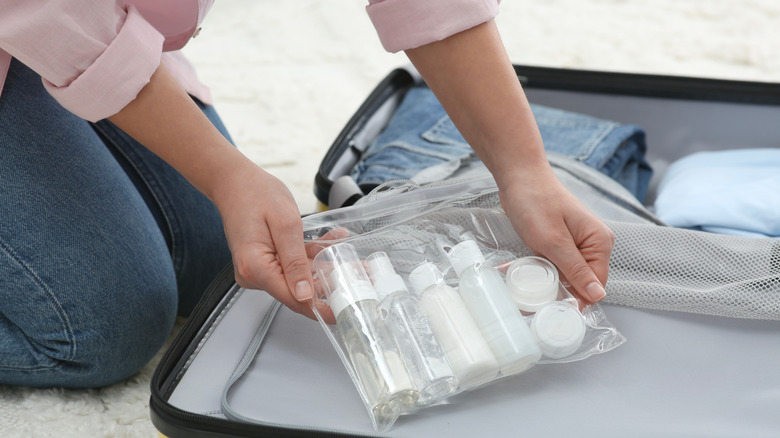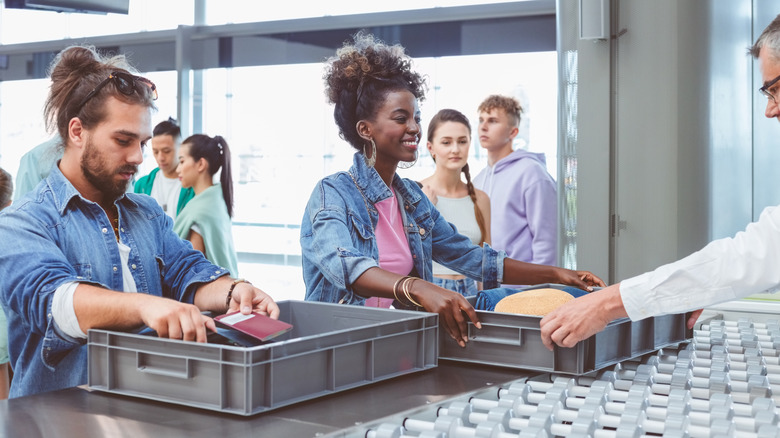Is TSA's Transparent Bag Rule For Liquids Really Enforced?
TSA's airport security checkpoints are often confusing and frustrating for travelers, whether you're getting pulled aside for this positive personality trait or clarifying the agency's carry-on baggage rules. When it comes to liquids and gels, from honey to toothpaste, the TSA has a strict 3-1-1 rule for travelers' carry-on luggage. Per the TSA, each traveler is allowed to bring one quart-sized, transparent plastic bag, filled with smaller containers that are a maximum of 3.4 ounces (100ml). This bag must be removed from the traveler's luggage and placed in a separate bin for screening. If you've flown recently though, you may wonder whether the TSA enforces this rule. Officially, according to the website, the answer is yes. But as TSA advisor Eri Jenkins told Reader's Digest, "In 2024, the requirement to have liquids in a clear quart-sized bag is no longer being enforced — however, the liquids should be able to fit into a quart-sized bag." If you would rather not use a quart-sized bag, a clear plastic container approximately 6 inches by 9 inches in size is also fine.
The 3-1-1 rule was created in 2006 after a thwarted terrorist attack, where terrorists attempted to detonate large quantities of liquid explosives on flights leaving from the U.K. Almost overnight, the Department of Homeland Security, as well as many other countries, created a new security rule to limit the amount of liquids passengers can have in the aircraft cabin. Most agreed on 3.4 ounces (100ml) as being the maximum allowed in carry-on luggage. While TSA makes exceptions for medicine and baby formula, they should be properly labeled and packed, as they may be tested by agents. It's also a good idea to inform TSA you are traveling with these items before going through the X-ray machine.
Changes are coming soon
One reason for the leniency regarding clear bags is because of the different types of scanning machines at airports nationwide. Newer scanners at some airports use CT technology, providing screeners with a 3D image of a bag's contents, making it easier for TSA officers to differentiate between threatening and non-threatening items inside a traveler's luggage. However, since this technology is being rolled out gradually, it may still be a while before the 3-1-1 rule is officially removed. This may be another reason to sign up for TSA PreCheck. Regardless of which airport they use, travelers with PreCheck normally do not have to take their liquids and gels out of their bags, as long as they are in small containers. It's just one key benefit that first-time PreCheck users should know before going through security.
As of late 2024, it's still a good idea to pack and store liquids and gels in a transparent bag. Even though the U.K. and EU countries had promised to remove the 100ml requirement, both have since rolled back their timelines, with no current end date in sight. In the United States, current enforcement largely depends on the airport and the TSA agents working, though sizing up liquids and gels seems to be less of a concern than in the past.
If your containers set off the scanner, either for being too big or improperly packed, you will have two choices. You can either return to the check-in counter and check your luggage, or you can wave goodbye to them at the security checkpoint, as you're required to dispose of them before catching your flight.

